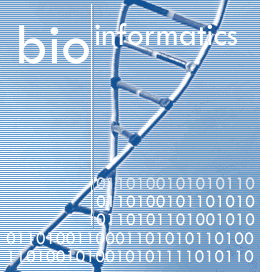 If you find the fields of biology and/or computer science to be interesting, you may be wondering what exactly is bioinformatics? By reading the information found below, you can obtain an answer to this question and several others that pertain to the field of bioinformatics.
If you find the fields of biology and/or computer science to be interesting, you may be wondering what exactly is bioinformatics? By reading the information found below, you can obtain an answer to this question and several others that pertain to the field of bioinformatics.
Bioinformatics – A Brief Overview
According to Bio Planet, bioinformatics is the application of computer technology to the management of biological information. One of the major activities that the field of bioinformatics involves is the development of software tools that will help generate useful knowledge within the biological field. Although they can intersect, bioinformatics is distinct from the field of biological computation. While biological computation is a subfield of computer engineering and computer science that uses biology and bioengineering to create biological computers, bioinformatics employs computers for the purpose of better understanding biology.
Bioinformatics – Goals
One of the primary goals of the bioinformatics sector is to generate an increase in knowledge regarding various biological processes. Bioinformatics differs from other approaches that are employed to accomplish this objective as a result of the fact that its focus on the development and application of specific techniques which some refer to as “computationally intensive.” Some of these techniques include visualization, machine learning algorithms, data mining, and pattern recognition. Some of the major research work that has been completed in the field includes gene finding, sequence alignment, drug discovery, drug design, protein structure prediction, protein structure alignment, prediction of gene expression, protein-protein interactions, the modeling of evolution, and genome-wide association studies.
Bioinformatics – Contemporary Developments
Throughout the last several decades, there have been rapid developments in genomic research technologies. Moreover, information technologies have generated developments that have resulted in the production of much information pertaining to the field of molecular biology. These days, bioinformatics incorporates the development and continual evolution of algorithms, databases, statistical and computational techniques. The field also involves the use of theory for the purpose of solving practical and formal problems that arise from biological data analysis and management.
Common Approaches
Some of the common activities that transpire within the field of bioinformatics include the mapping and subsequent analysis of DNA as well as protein sequences. The DNA and protein sequences can then be aligned for comparison purposes and/or to create protein structure models.
Sub-categories: Structural Bioinformatics
One of the broad sub-categories which falls under the umbrella of bioinformatics is structural bioinformatics. Structural bioinformatics involves the analysis and subsequent prediction of the 3-D structure of molecules like DNA, RNA, and proteins. This field covers generalizations regarding macromolecular 3D structure like principles of molecular evolution, binding interactions, and folding. This sector also encompasses functional and structural relationships, working from both computational models and experimentally solved structures.
Related Resource: Ph.D in Computer Science
Conclusion
If you find the worlds of biology and/or computer science to be intriguing, you should note that the field of bioinformatics is playing a primary role in the development and evolution of knowledge regarding both sectors. Now that you know what bioinformatics is, you can determine whether this field is one you might want to pursue professionally.